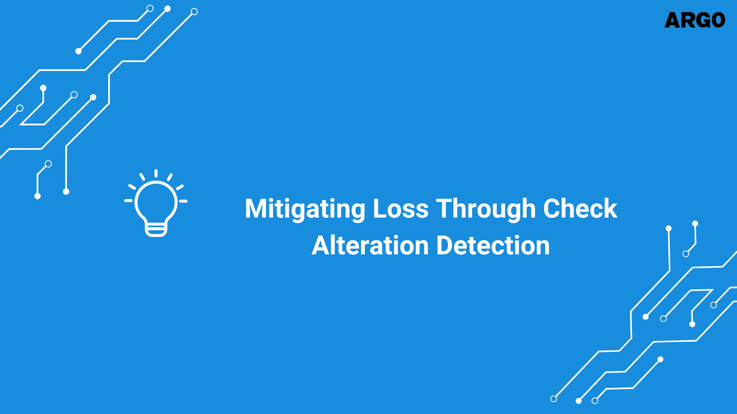Mitigating Loss Through Check Alteration Detection

Recent alerts published by the Financial Crimes Enforcement Network (FinCEN) and warnings from other leading industry groups state that check fraud remains among the top forms of payment fraud. Suspicious activity reports (SARs) filed by banks have more than doubled over the last two years as criminals are becoming more sophisticated and organized, using stolen checks traded on the dark web and anonymous messaging. The types and trends of emerging check fraud include stolen checks (washed, altered, and forged), counterfeit (difficult to detect across channels), remote deposit capture (anonymous and easy), and ATM deposit (no real-time human interaction and less monitoring).
The greatest increase in check fraud comes from "check alteration," which involves unauthorized changes or the addition of words or numbers. Fraudsters rely on "check washing" or "check scraping" to remove and replace ink, typically the payee and/or amount, on an otherwise negotiable check. Fraudsters rewrite the checks for a new recipient and a larger sum—often hundreds or thousands of dollars more—before cashing the check. Unlike counterfeit checks that are 100 percent fake, alteration fraud begins with authorized checks, increasing detection complexity due to the combination of valid and invalid content.
Combating this growing issue requires image analysis depth using newer AI tools and techniques. In addition to the traditional evaluation of structured data, “deep learning" models, such as artificial neural networks (ANNs), can evaluate subtle differences in handwriting styles or the fonts used on printed checks. Analytical software evaluates handwriting to identify individual writers by the style traits of their handwriting. AI models trained on large, diverse datasets of handwriting samples learn and recognize a wide range of handwriting styles.
Effective fraud detection requires analysis tools for signature verification, check stock verification, noise identification and elimination, and image analysis tests to verify attributes, field structures, and other visual features. High detection accuracy with low false positive rates requires robust reference image management with increased scrutiny for the addition of high-quality reference images used for comparison.
For more information, download the Using Analytical Software to Create Better Business Outcomes white paper.

